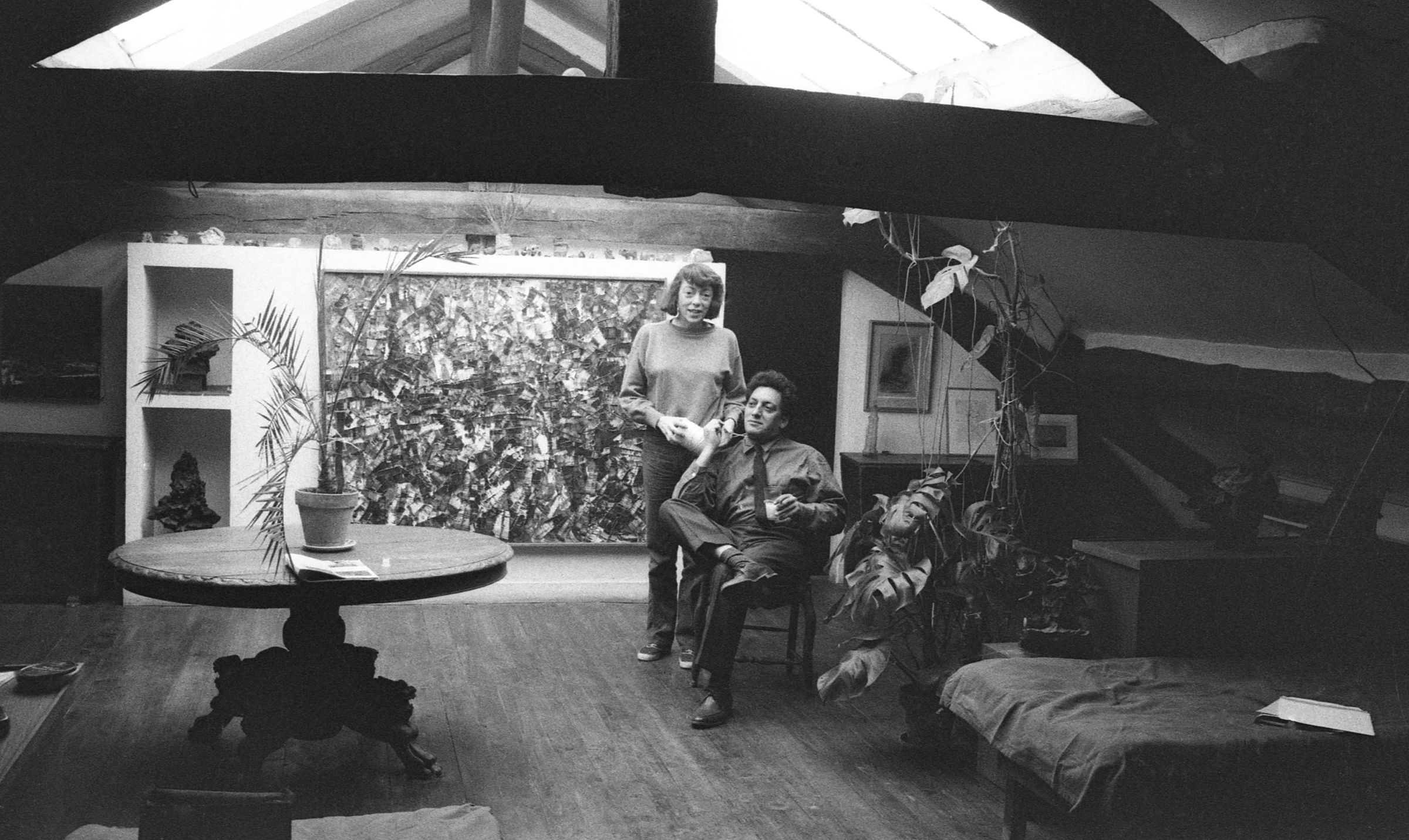Shinkichi Tajiri, Prisoner, 1950-1951
American born of Japanese parents, Shinkichi Tajiri was 18 when placed with his family in a detention camp after the attack on Pearl Harbor. In order to get out, he enrolled in the 442nd Regiment, the Japanese American Volunteer Unit, which distinguished itself for its fighting in Europe. He was himself injured during the Italian campaign. Several of his welded iron sculptures have, like this one, an autobiographical connotation, allowing him to exorcise the sufferings of war.
The scrap wires aggressively draw a silhouette whose humanity has disappeared in the geometric shapes and spiky tips. The work violently reinterprets surrealist sculptures, especially those of Pablo Picasso. Arrived in Paris in 1948, Tajiri joined forces with the CoBrA group and then took part in numerous group exhibitions. He was one of the co-founders of the Galerie Huit. In 1956, he moved to Amsterdam.
Reginald Murray Pollack, Blue Landscape, 1957-1960
Purchased, with funds from the Friends of the Whitney Museum of American Art. Inv. 59.12 The tripartite composition gives a glimpse of a dark background, occupied by geometric shapes on which gesture and color are exercised freely. Each additional layer becomes more intangible and gives precedence to the bursting of colors.
Reginald Murray Pollack benefited from the G.I. Bill which permitted him to come to Paris in 1948. He enrolled at the Académie de la Grande Chaumière and settled into accommodations for artists in Montparnasse, Impasse Ronin, near the sculptor Constantin Brancusi. He divided his twelve years spent in France between Paris and Provence. He was one of the American artists who founded the Galerie Huit. Profoundly marked by his years of war in the Pacific, his metaphysical vision of existence nourished a painting that oscillates between abstraction and a figuration marked by surrealism.
